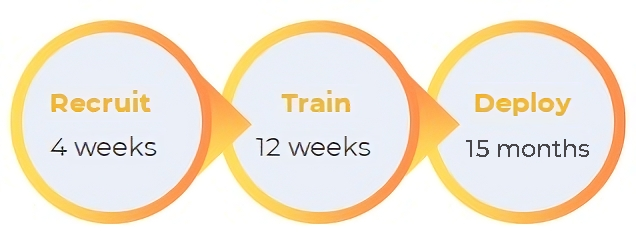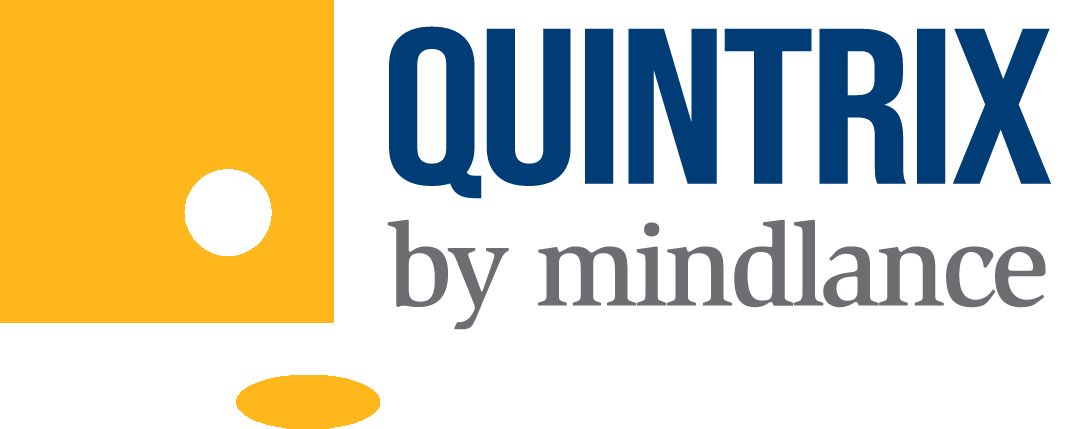Which Early Career IT Talent Development Model is Best for Your Team
Competitive business pressures never go away. In fact, with AI and other groundbreaking technologies leveling the playing field, competition is perhaps at an all-time high. The way to cut through the clutter and really differentiate comes down to implementing the right technology and employing the right people. We are going to focus on the latter.
Despite a perceived IT talent shortage, there is ample technical talent available. That isn’t the issue. The problem is finding and onboarding the early-career talent you need in a cost and time effective manner without incurring unnecessary risk. Hiring nascent talent can be a great way to access and train future valuable professionals at lower costs than established high-dollar talent.
There are many models to choose from, each with its own unique advantages and disadvantages.
New IT Talent Takes Time and Costs Money But does it have to?
A 2023 Gallup poll found that:
- New employees take 12 months (on average) to become fully productive.3
- 62% of businesses with effective onboarding programs witness a 54% increase in employee engagement and a higher time-to-productivity ratio.
This tells us two things:
- It takes far too long to generate value from a new hire
- Companies must establish highly effective onboarding processes to accelerate that timeline.
| Model | Recruitment Costs | Training Costs and Resources | Months-to-Productivity | Risk Level |
|---|---|---|---|---|
| Recruit-Train-Deploy | Zero | Zero | 4 | Low |
| Apprenticeship | Zero | High | 12-241 | High |
| Bootcamp | Zero | Zero | 12 | High |
| University Hiring | Zero | High | 12-24 | High |
| Internship | Zero | High | 12-24+ | High |
Recruit-Train-Deploy (RTD)
One of the most effective approaches is the recruit-train-deploy (RTD) model. It can augment your in-house capabilities, help you deliver on your strategic initiatives, and satisfy your diversity goals without wasting time, money, and precious resources unnecessarily.
As the RTD firm does the recruiting for businesses and strives for diverse hiring, there are no recruiting costs associated with sourcing young talent and meeting your diversity goals. The RTD firm effectively finds prospective IT talent with the right education, soft skills, and emotional intelligence level required to excel quickly and fit within your organization.
Moreover, the RTD firm collaborates with the customer’s line management to customize the training program to meet the client’s unique needs. This way, talent comes aboard with the right foundational knowledge and training, significantly reducing time to productivity.
“The RTD model provides a more risk-free way for companies and employees to have a trial period before committing the time and expense of full-time onboarding.”


Talent provides value to your team

Talent is tested before onboarding because the client organization can monitor success, soft/hard skills, aptitude, and emotional intelligence during the RTD training program and make course corrections along the way. Only those that are a good fit are hired.
Some RTD firms take training a step further and provide the necessary technical and business training coupled with emotional intelligence training, which focuses on self-awareness, self-regulation, empathy, social skills, and relationship management.

These augmented skills help ensure talent is integrated well with their new organization. This matched skill set and emotional/cultural alignment, coupled with a figurative 12-week interview process (during client monitoring of their training), leads to higher overall satisfaction and retention rates, making this a highly successful early-career talent development model. Businesses also has the advantage of selecting whether or not to retain the talent permanently. Selecting the RTD model can significantly reduce time-to-productivity, increase staff retention rate, and provide an established career path for junior talent who should increase value to organizations.
The disadvantage to this model is that the client’s team isn’t performing the initial foundational training, but with the team’s involvement in crafting the curriculum, this seeming disadvantage can be largely mitigated.
Apprenticeships
With an apprenticeship, the organization sources its own talent and incurs no other upfront costs. It is, however, a paid job with training. Fortunately, some government grants exist to supplement the costs of apprenticeships.

Businesses provide skills-specific, hands-on training. Most apprentices receive a slightly lower compensation than that of a permanent employee typically for the first 12-18 months of employment. This model provides some advantageous PR opportunities around an organization’s ESG (environmental, social, and governance) goals. Because the business itself is doing the hiring, apprenticeships provide a great diversity hiring opportunity. The recruitment team can source suitable talent that meets its diversity goals.
This model also enables organizations to train the employees their way. Once the apprenticeship ends, these employees are primed for permanent hiring, as they have the specific skills and expertise the business seeks. Therefore, retention is among the highest with this approach. Moreover, in some states, businesses also receive tax credits and employee tuition benefits.
Bootcamps
IT bootcamps teach early-career professionals specific skills, such as coding, cybersecurity, or software development. If businesses need these skills, bootcamp graduates can be a great source of new talent. It costs organizations nothing, and you are hiring talent self-selected for the bootcamp. This should mean these professionals have a passion for learning that skill. These hires could be a good fit if you need this particular area of expertise. However, the entry requirements for bootcamps are generally less stringent than that of apprenticeships or recruit-train-deploy programs. There is also no upfront vetting on soft skills, meaning talent may lack soft skills and emotional intelligence. Moreover, soft skills training is typically not part of a technical bootcamp training. No thought is put into diversity and you must hire these individuals as permanent hires from day one.
The cost to students for the average IT bootcamp is around $10,762, and full-time programs require 60-90 hours per week for the student, and part-time programs require 15-23 hours each week. According to Forbes and its Best Online Programming Bootcamps list, every bootcamp it reviewed offers access to job placement services upon program completion. Some even offer job guarantees and will refund a graduate’s full tuition if they cannot secure a qualifying job. This model can present some risk for hiring talent that isn’t a good fit as you rely on the bootcamp to provide adequate training. Unlike the RTD model, your line managers are not involved in curriculum building or foundational training.
Campus Recruitment
The most traditional approach for finding early-career talent is hiring directly from Universities. Organizations have the opportunity to establish long-term relationships with select universities and can even offer curriculum feedback based on their particular needs and the needs of the industry. With very close partnerships, businesses can also collaborate with the university on upskilling programs.
These new hires are selected largely based on any internships they’ve had, as well as their grades and education. This approach can surely yield some tremendous young talent, however, your line managers are often on the hook to train the new talent before most can make valuable contributions to your IT team. With university recruitment, you have the advantage of training professionals your way from the start, You also have the flexibility to select diverse talent. Moreover, these employees tend to stay longer than other models as they feel grateful you gave them their first big break. Some sources put this number as high as 98% the first year.

Other benefits to the hiring organization include strengthening your employer branding among university students. This can help your recruitment team engage early with emerging talent. These hires also bring an outside, fresh perspective to your organization and may offer new ways to deal with issues your company faces. One of the primary challenges with the university hiring approach is that organizations rely on the university hiring cycle, and there is little flexibility for onboarding timelines. Diversity hiring may also be more difficult than with other models if you recruit from only a few colleges.
Internships
Internships are a great way to find diverse talent that meet all your requirements without incurring substantial expenses. Most enterprises pay their interns for the tenure of the internship. These professionals come aboard as pseudo-employees, and your team can train them accordingly. Throughout their tenure, you can assess their skills, learning aptitude, soft skills, and emotional intelligence level. You also see firsthand how well they get along with your permanent staff. You can offer them a permanent position if they are a professional fit. If they are not, you didn’t take a big risk, so you likely didn’t lose much in terms of time and resources.
Conclusion
There are several early-career talent development models to consider. Many approaches offer attractive advantages, such as no-cost hiring, no-cost training, and skills-specific development. Most, however, offer some disadvantages that must be considered when selecting the best model. These can include bringing in untrained talent, limited diversity opportunities, and fixed onboarding windows.
When selecting the best model for your business, look closely at each approach and see where each model’s pros and cons align with your business, your needs, and your hiring timetable. You should then have enough background to pursue your best route further.
If you would like to discuss more around this topic, please contact us.



